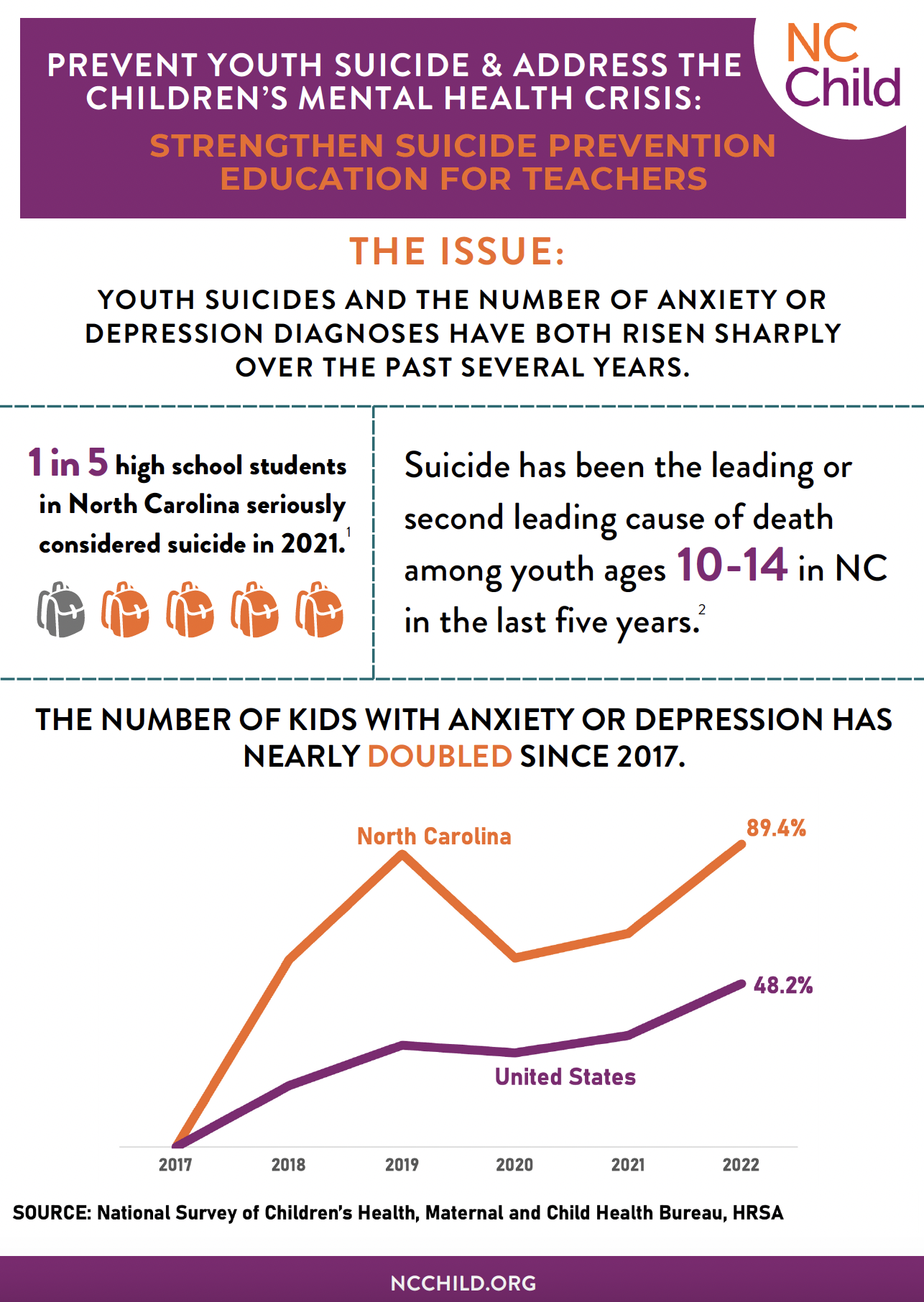The Issue:
Youth suicides and the number of anxiety or depression diagnoses have both risen sharply over the past several years.
A generation in crisis
North Carolina’s youth and children are in crisis, with suicide now the leading cause of death among youth ages 10-14 in our state. One in five North Carolina high school students reported seriously considering attempting suicide in 2021, up from 16% in 2017. One in ten reported actually making an attempt. An unprecedented 67 children (ages 0-18) died by suicide in our state in 2020.
The number of kids with anxiety or depression has nearly doubled since 2017.
Meeting kids where they are
It’s time to get struggling kids back to health by putting the resources in place where they spend most of their time – at school. When kids are in crisis, it’s essential they get effective support from trained health professionals who can partner with parents to provide the support kids need.
School is one of the most important places where we support children’s mental health. We need to meet kids where they are – and they are at school every day.
Sources
- Analysis of Center for Disease Control Youth Risk Behavior Surveillance System (YRBSS) Data (2021)
- Center for Disease Control National Center for Health Statistics annual mortality data via WISQARS (2017-2021)
- Jason Foundation Survey
- National Survey of Children’s Health, Maternal and Child Health Bureau, HRSA

